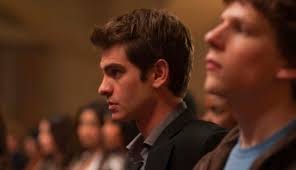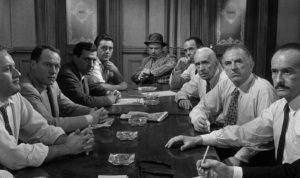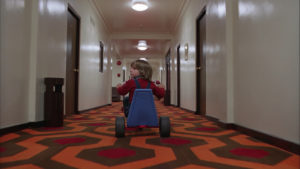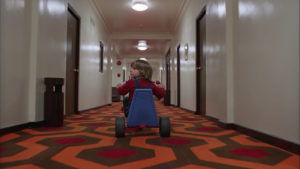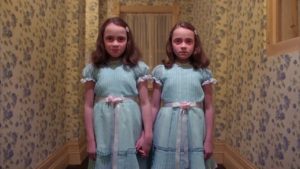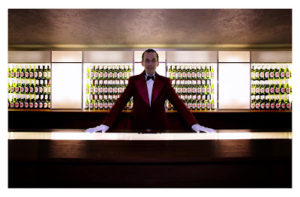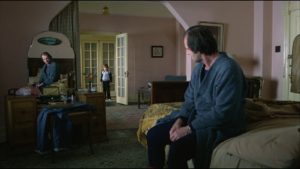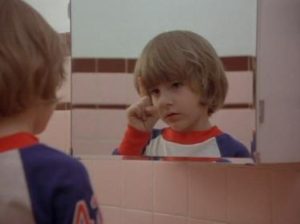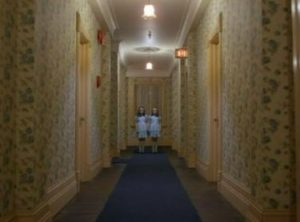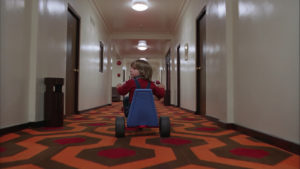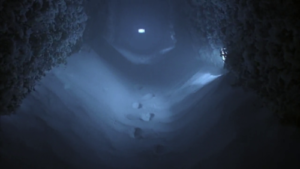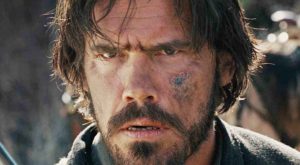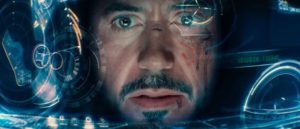Throughout this film the director, Stanley Kubrick, chose to shoot a lot of scenes using a Steadicam. This was new technology at the time, and Kubrick’s ideas helped to develop the camera even more. One example of a Steadicam shot in The Shining is towards the end of the film, when Wendy is running up the stairs, trying to find Danny after Jack has gone insane.
Here, the Steadicam shot helps the audience to understand Wendy more, as it follows her the whole time without cutting away. It increases her sense of panic, because the shot is sometimes very close to her face which allows the audience to clearly see her emotions and how she’s struggling with the situation that she’s in. Also, the Steadicam shot makes the scene more tense, as the smooth movement seems unnatural to the audience. This immerses the audience, and makes them feel like they don’t know what will be around the corners as Wendy climbs the stairs. The shot lasts for quite a while – longer than what audiences would typically expect from a film. Again, this gives the scene a sense of something not being quite right, which fits perfectly to the story behind the hotel and the strange things that the family have been seeing while living there.The camera does cut away at the end of this scene to focus on the man and the bear in the bedroom, reminding the audience of the weird things that have been occurring throughout the hotel.
In The Shining, Kubrick also focused on making many scenes symmetrical, where the audience’s gaze was directed towards a vanishing point at the center of the screen. This can be seen in this shot with Jack and Grady in the bathroom during the party scene.

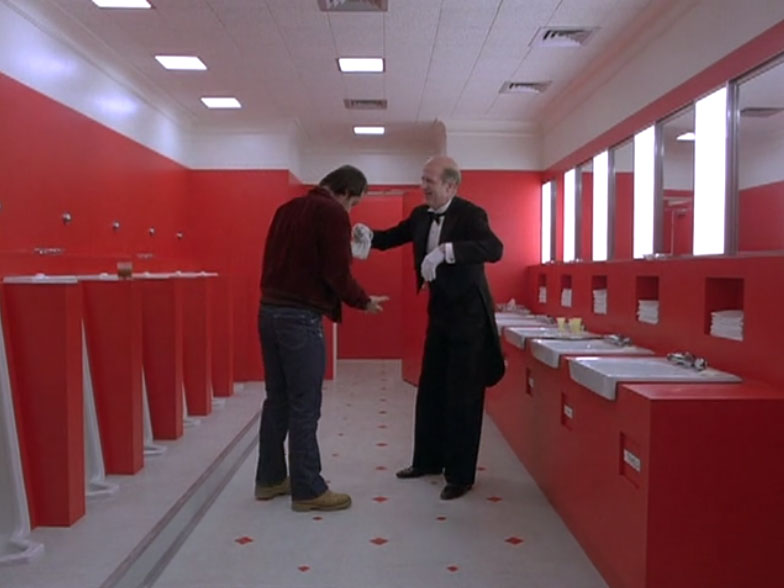
The two men in the center of the shot are symmetrically placed, so that they mirror each other. Kubrick has specifically chosen to place the actors here as it creates a slightly unnerving effect due to the symmetry of the whole scene. The walls of the bathroom reflect each other, because of the nearly identical decoration that they both have – red walls and either sinks or urinals coming out of them. There are many others ways that symmetry is used in this scene, which comes together at the vanishing point in the middle, behind the two characters. Using such a symmetrical set has the effect of the audience feeling like something isn’t quite right, as real life isn’t normally structured in this very organised way. It also makes them start to think about how Jack is beginning to copy Grady’s actions, as they are standing in similar poses, and how he might go on to copy him in other ways. With the dialogue used in this scene, it helps the audience to realise that Jack is turning insane, and that he wants to kill his family – just as Grady had done years before. Kubrick has also used a deep focus lens, which means that everything in the scene is in focus at the same time. This makes the audience unsure of where they should be looking, despite the two characters directly in the center.

